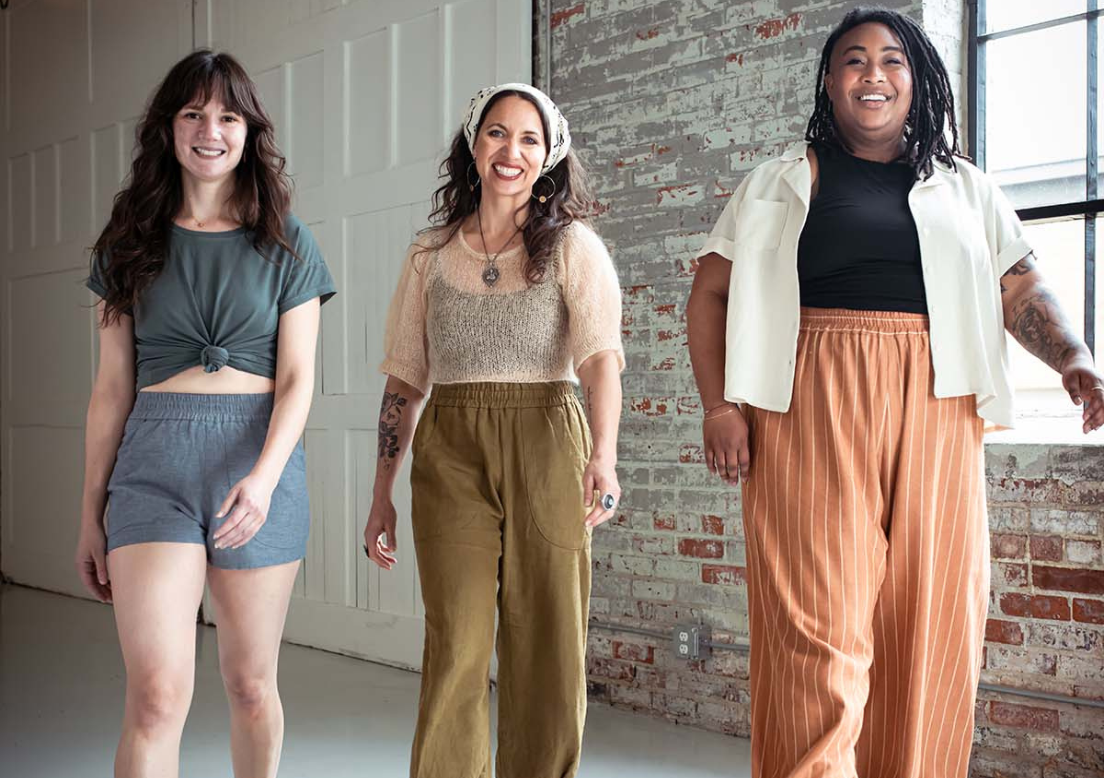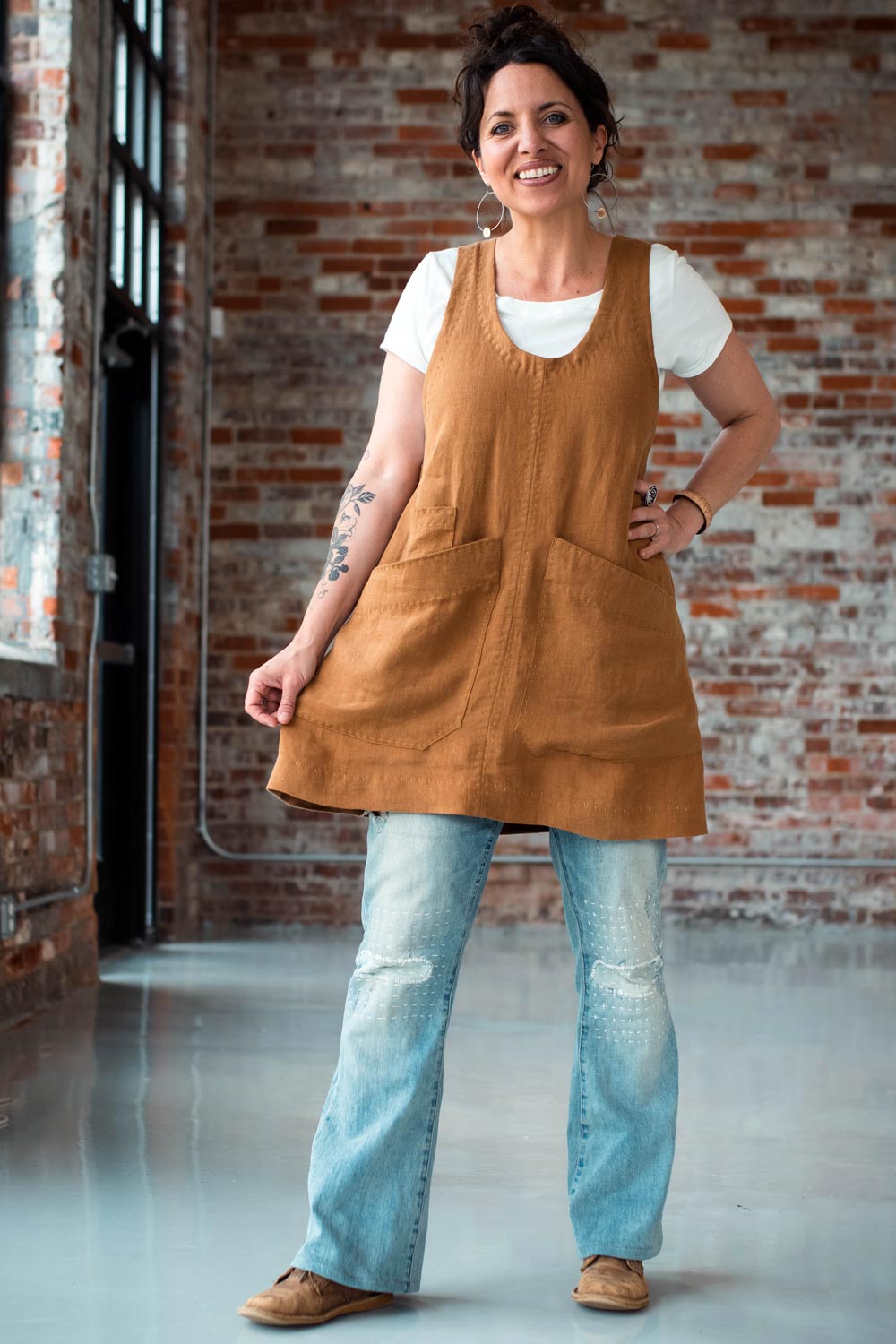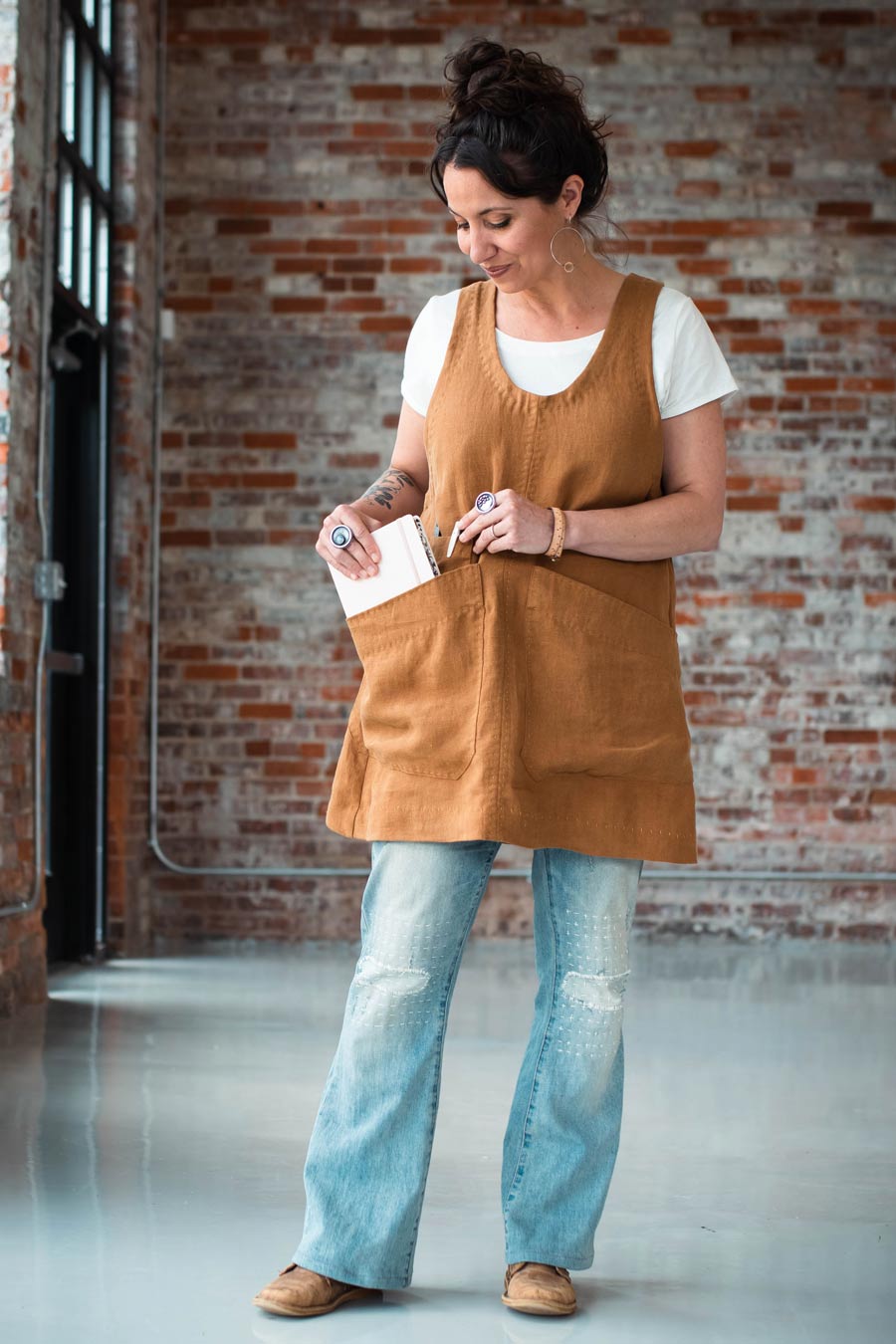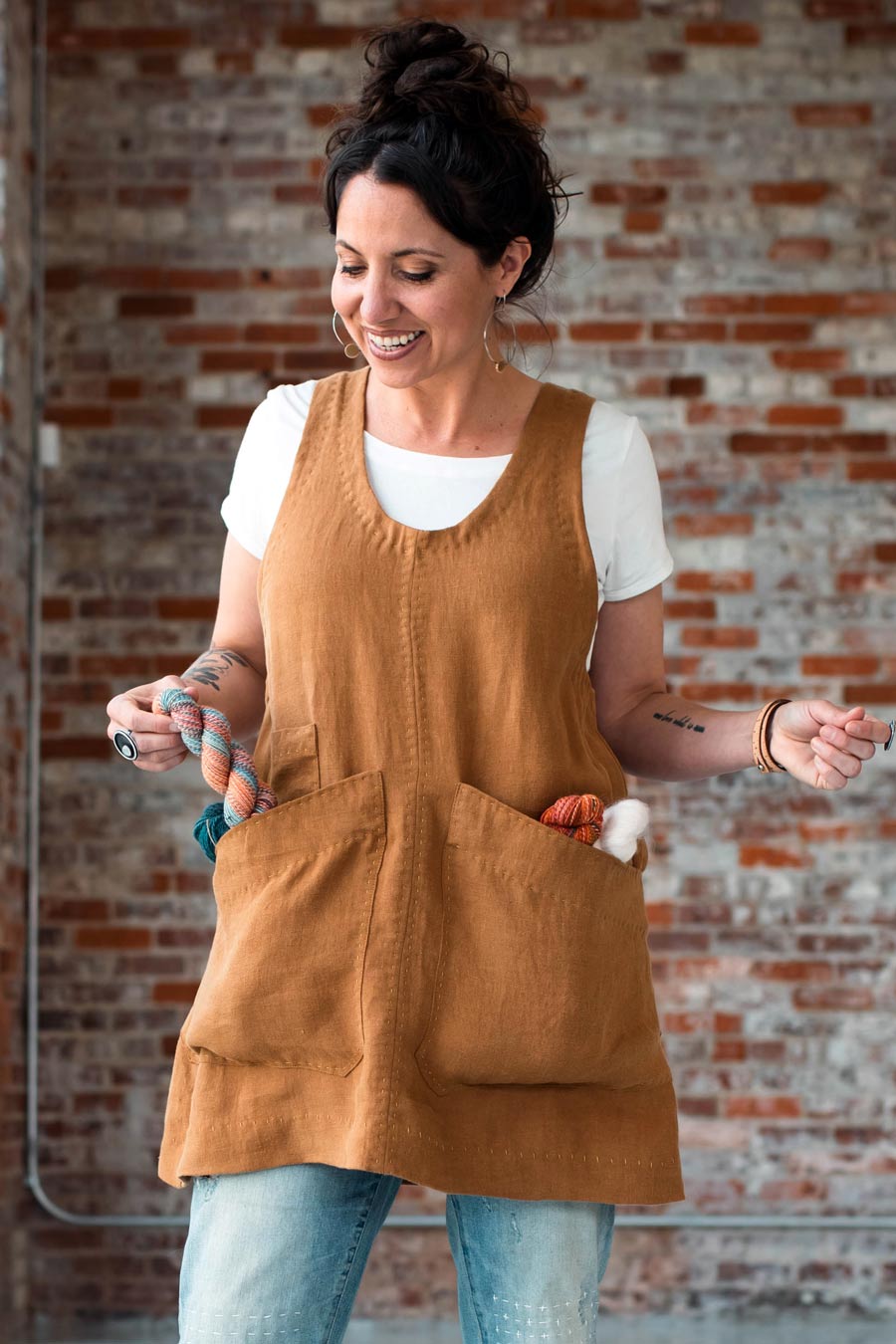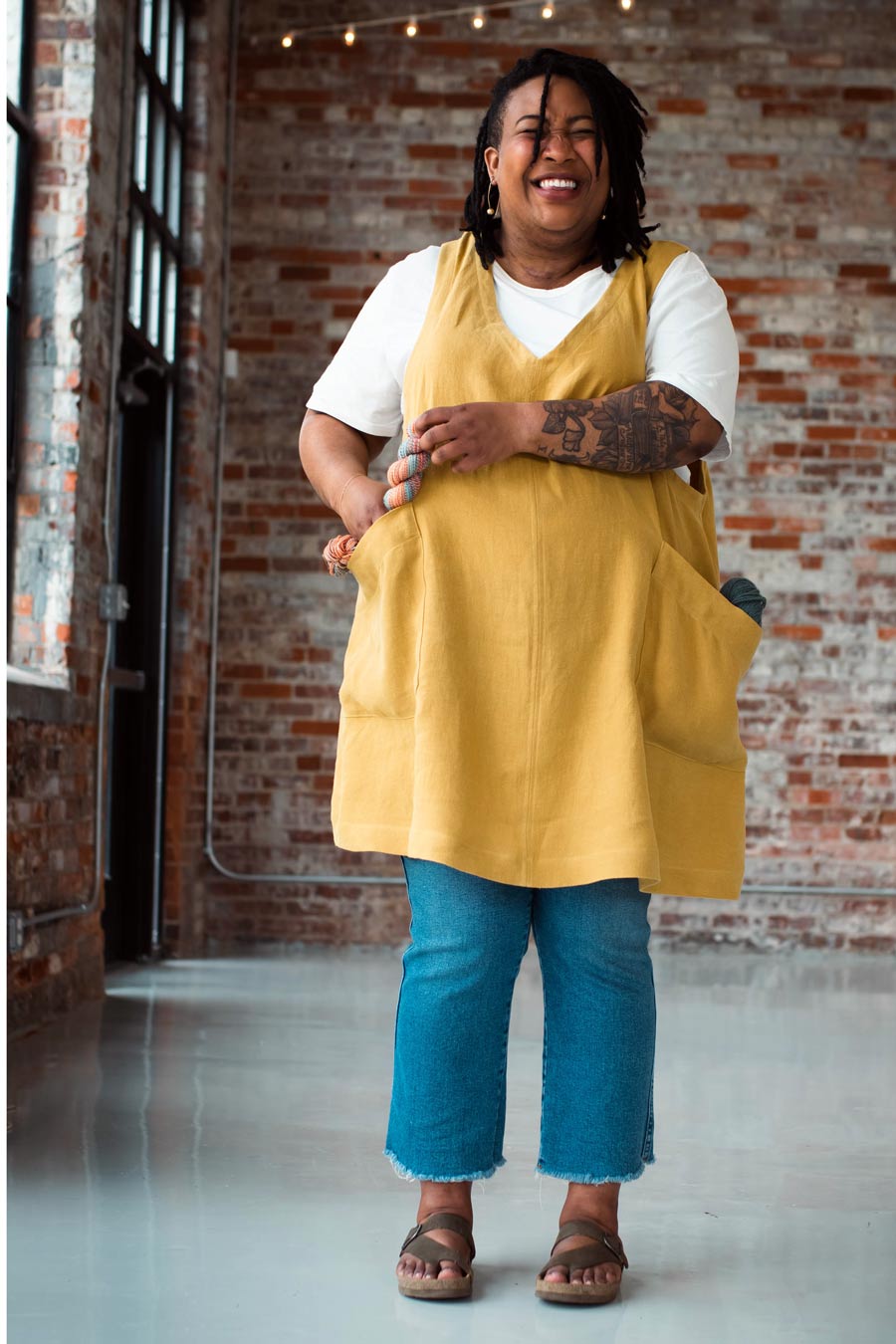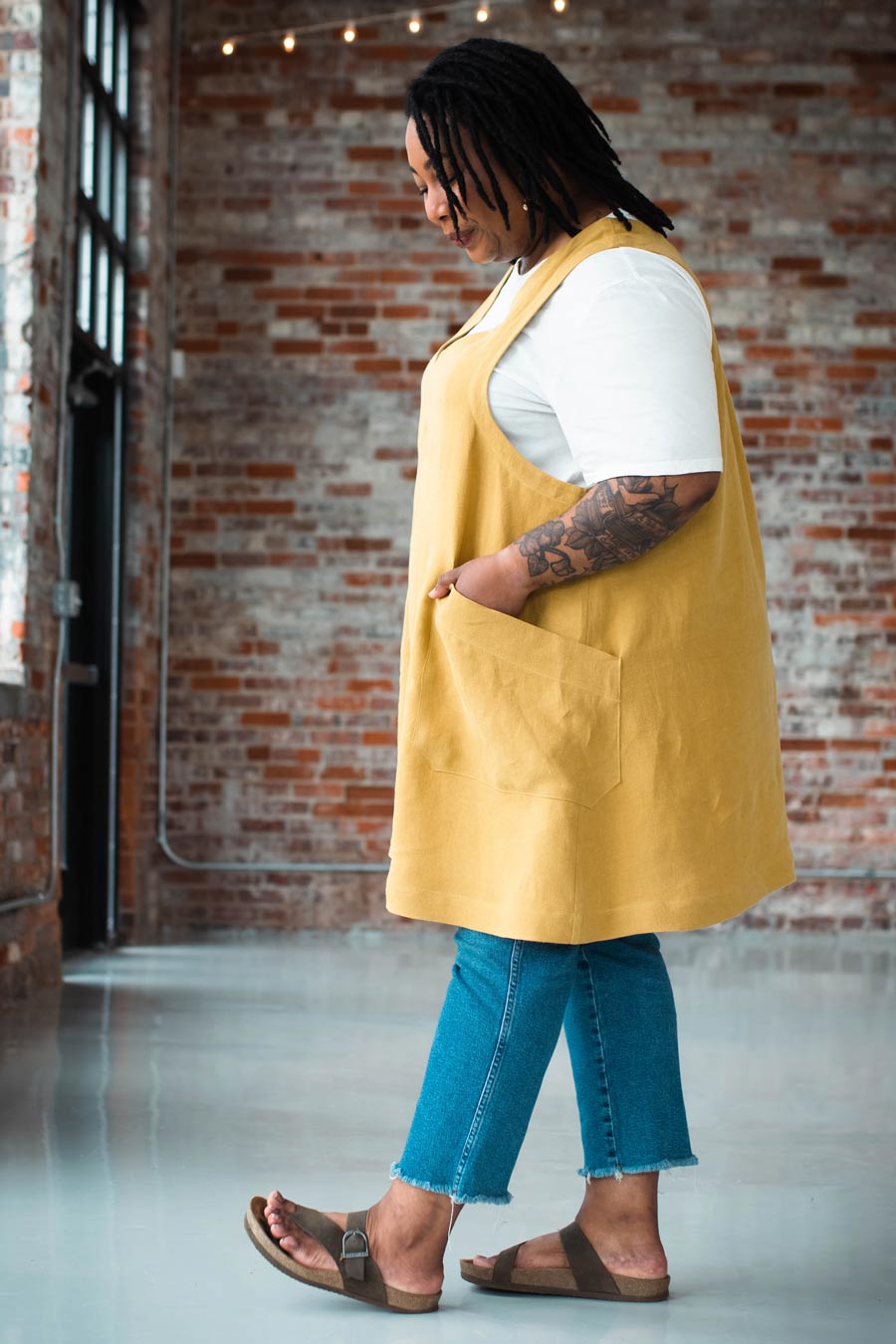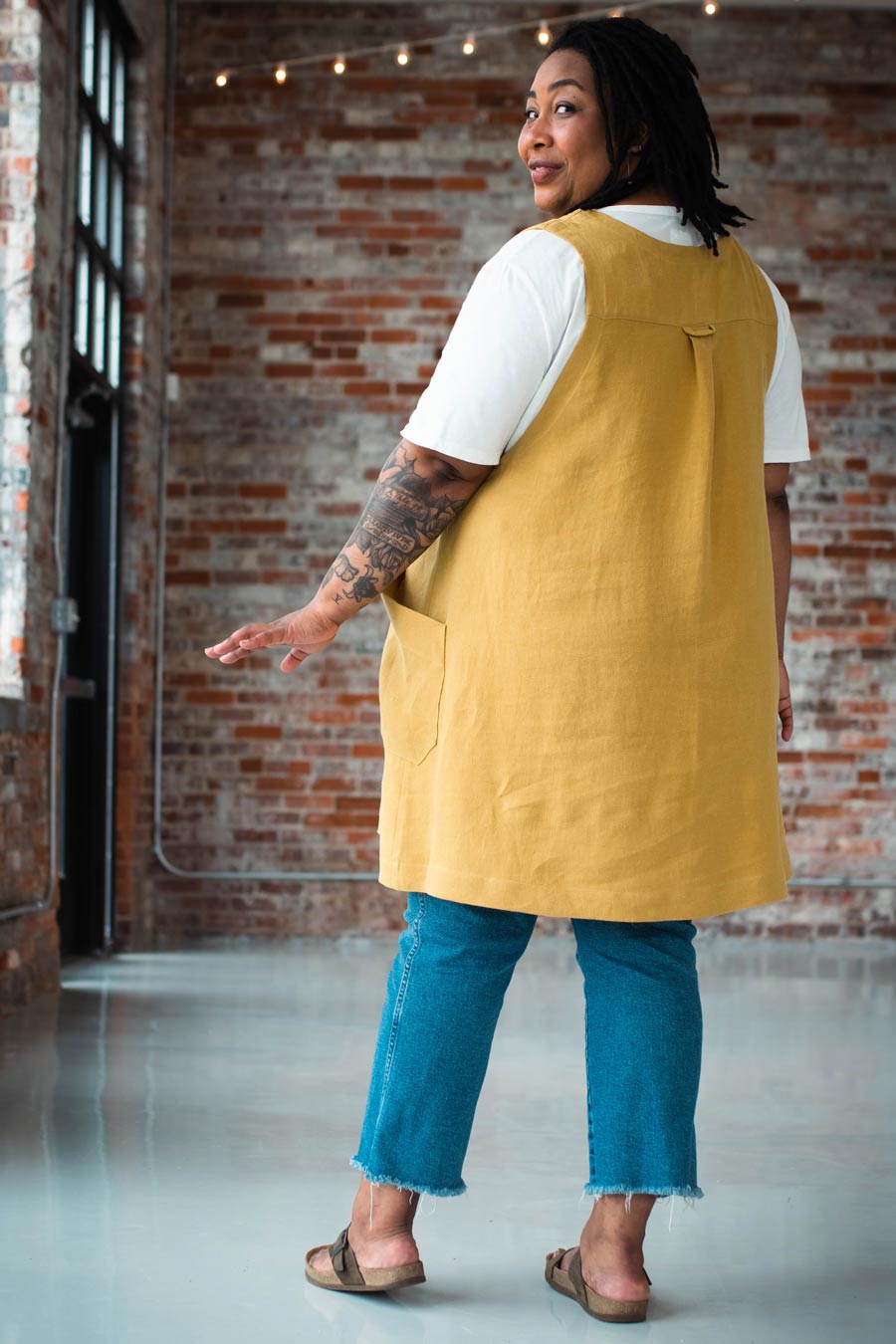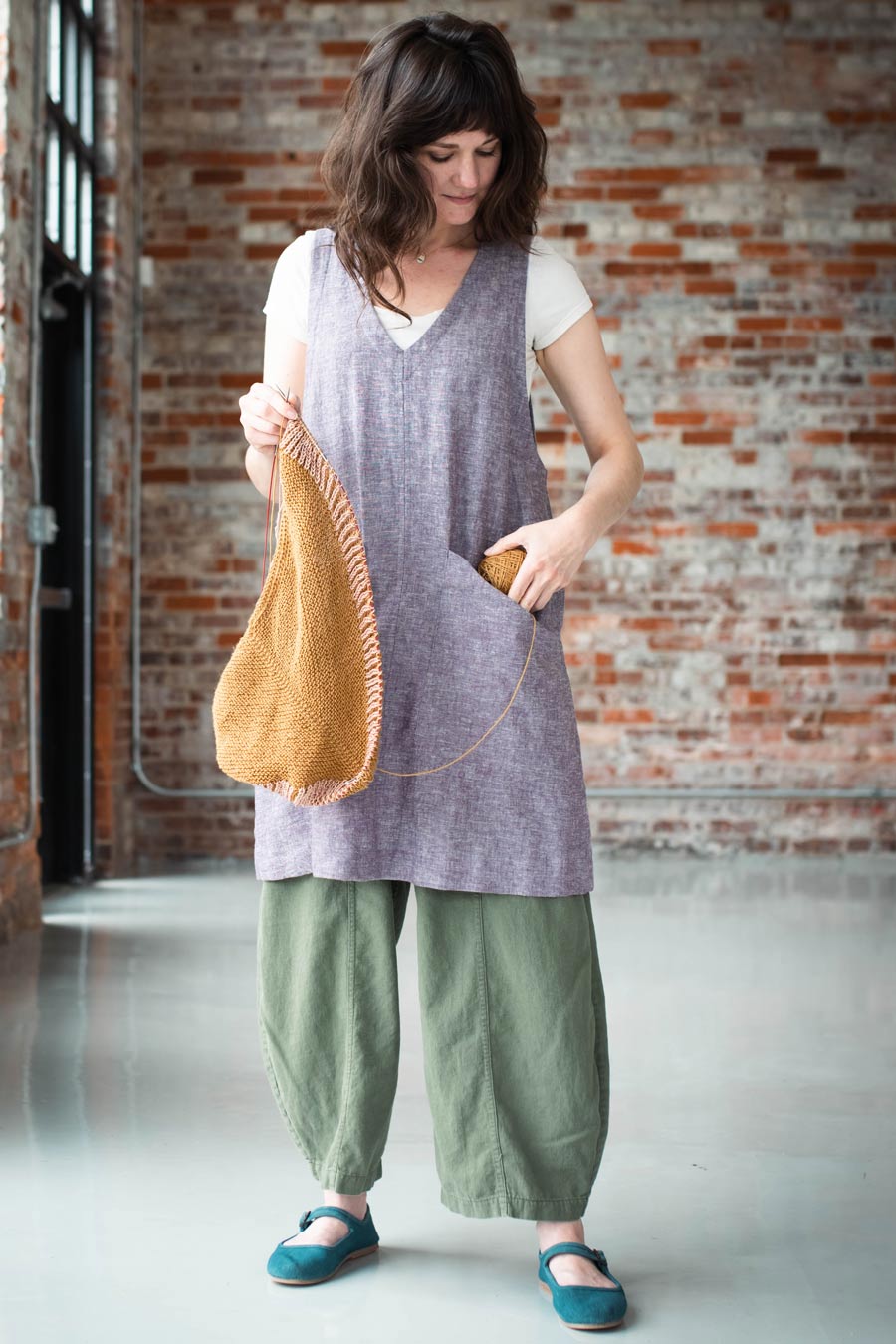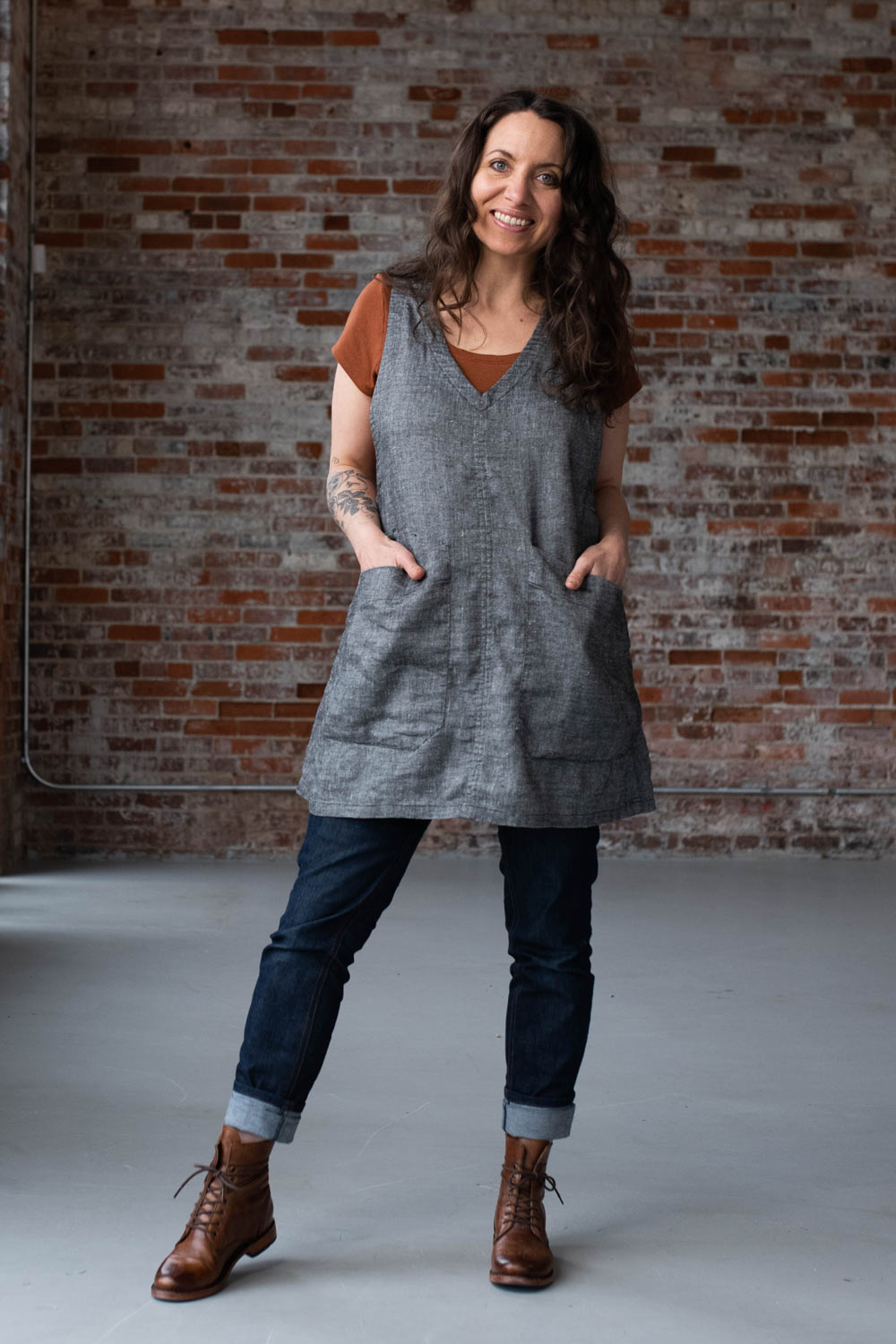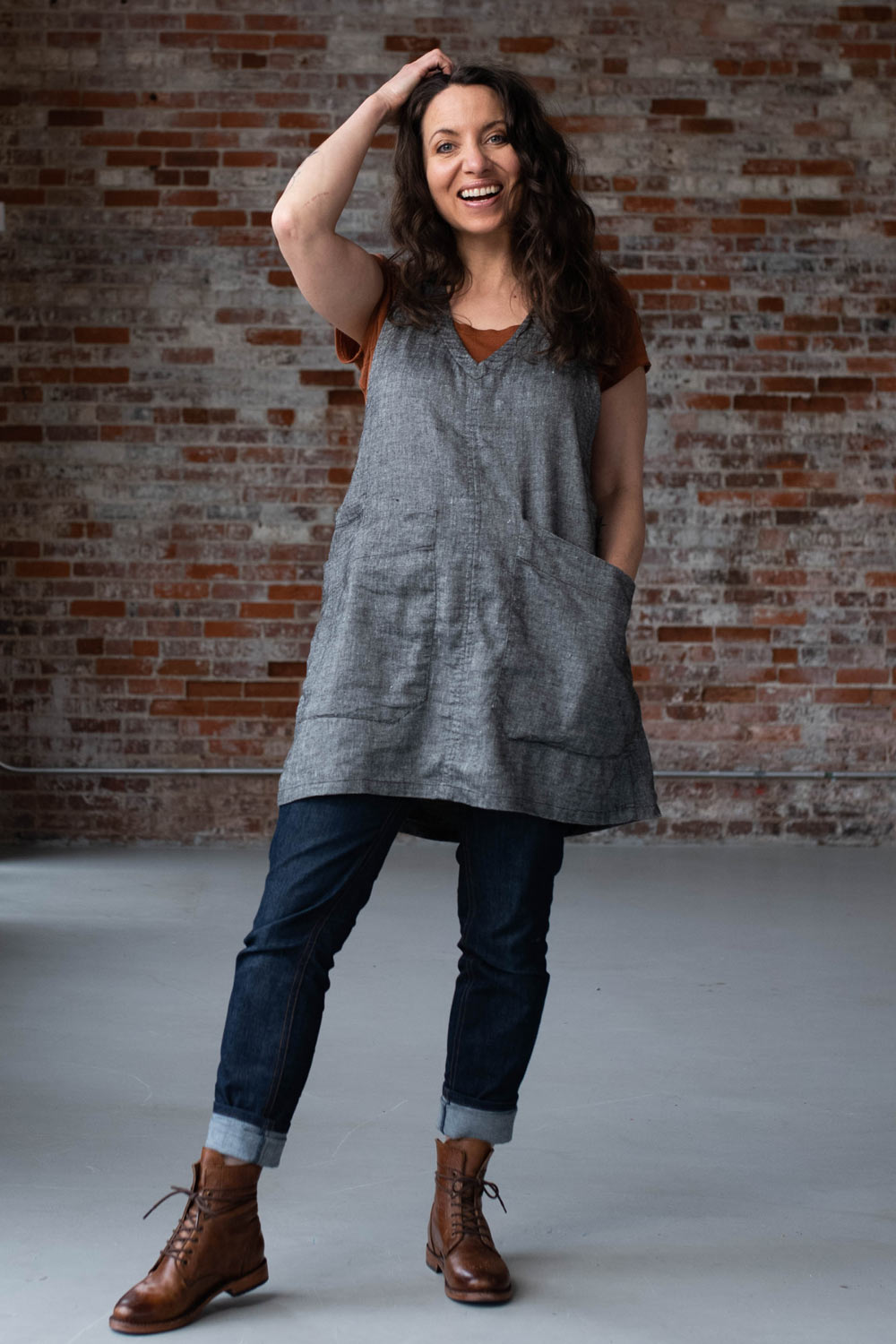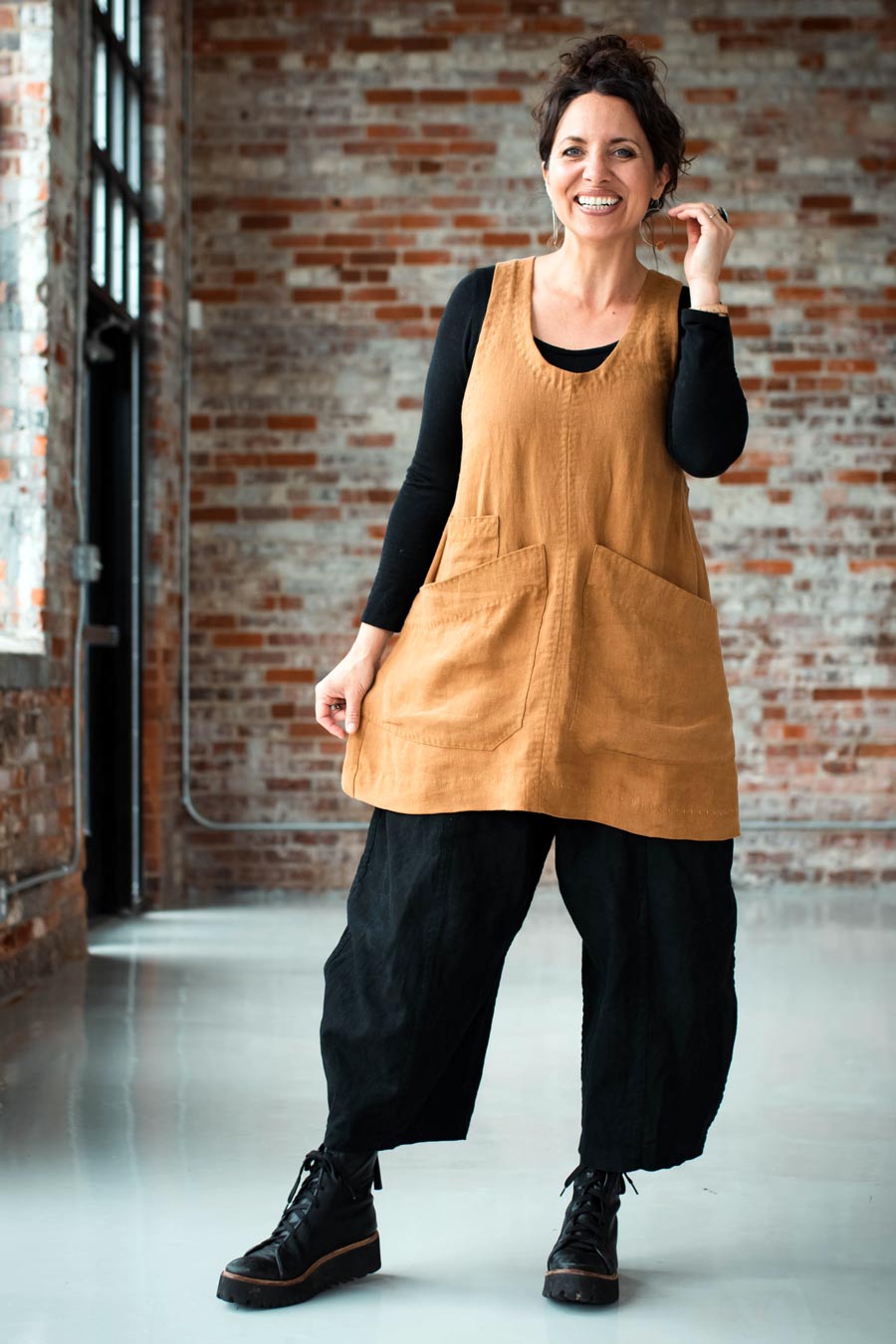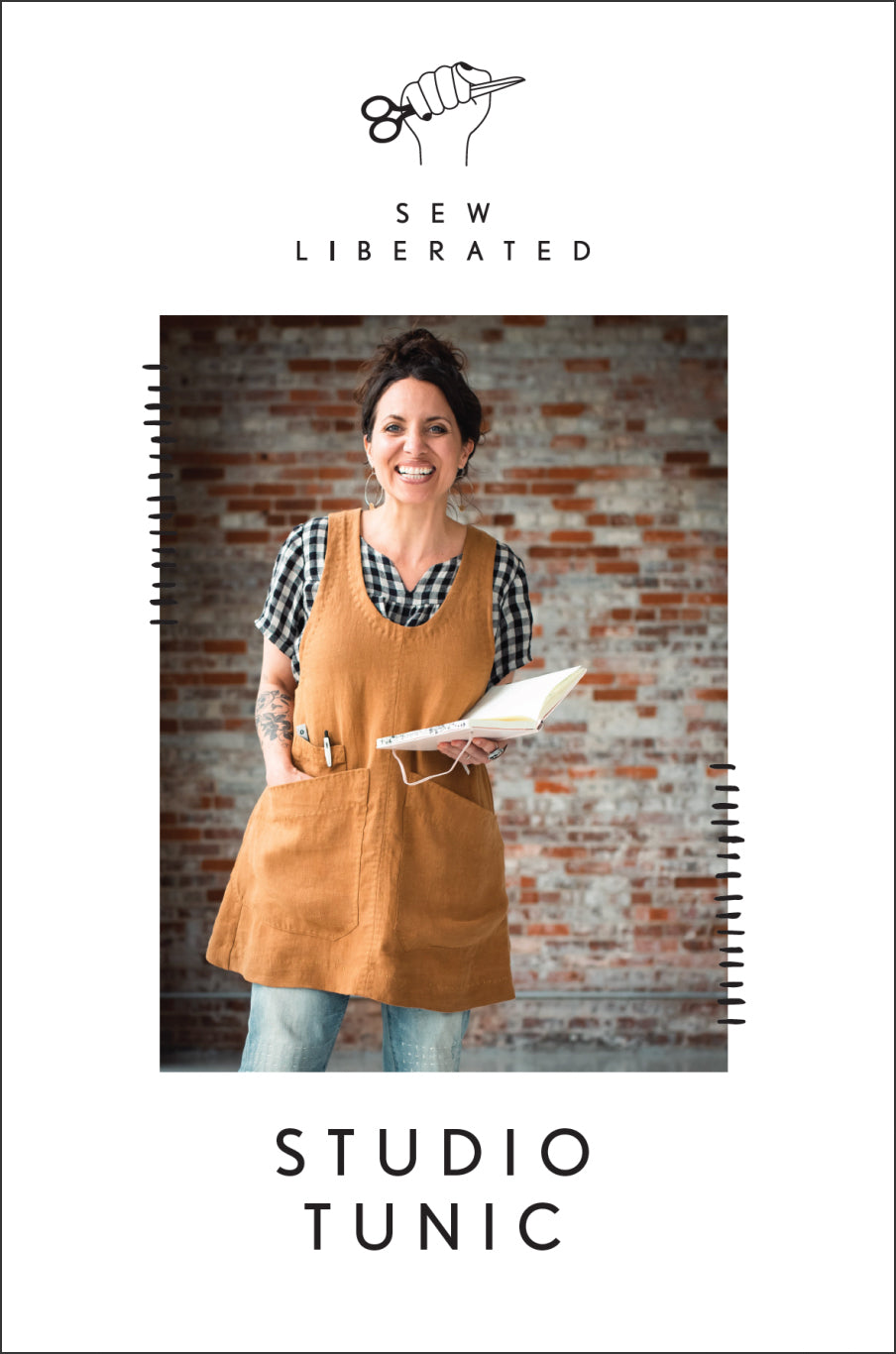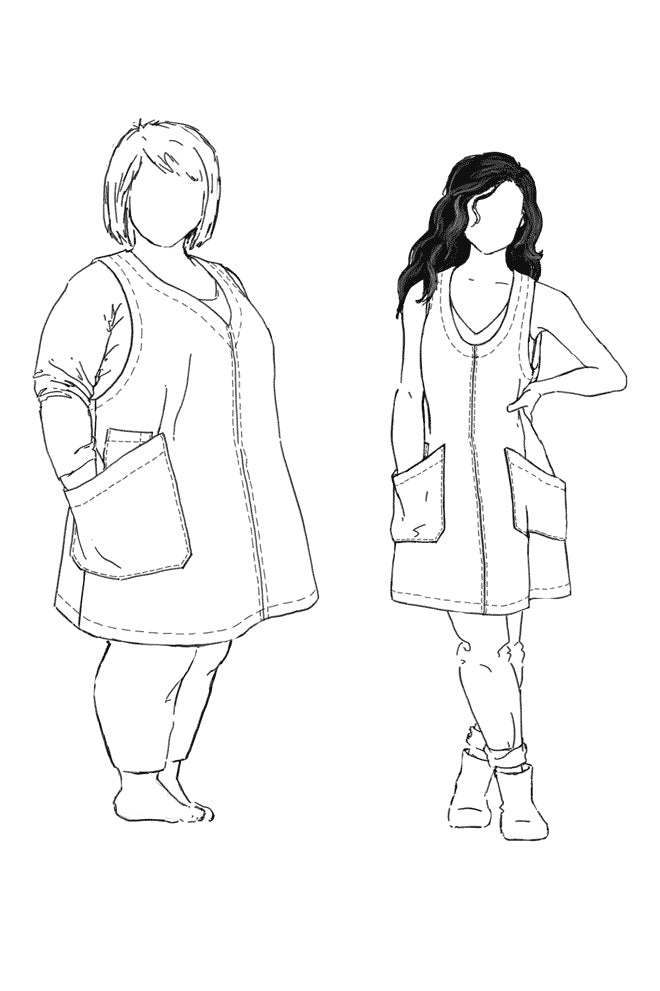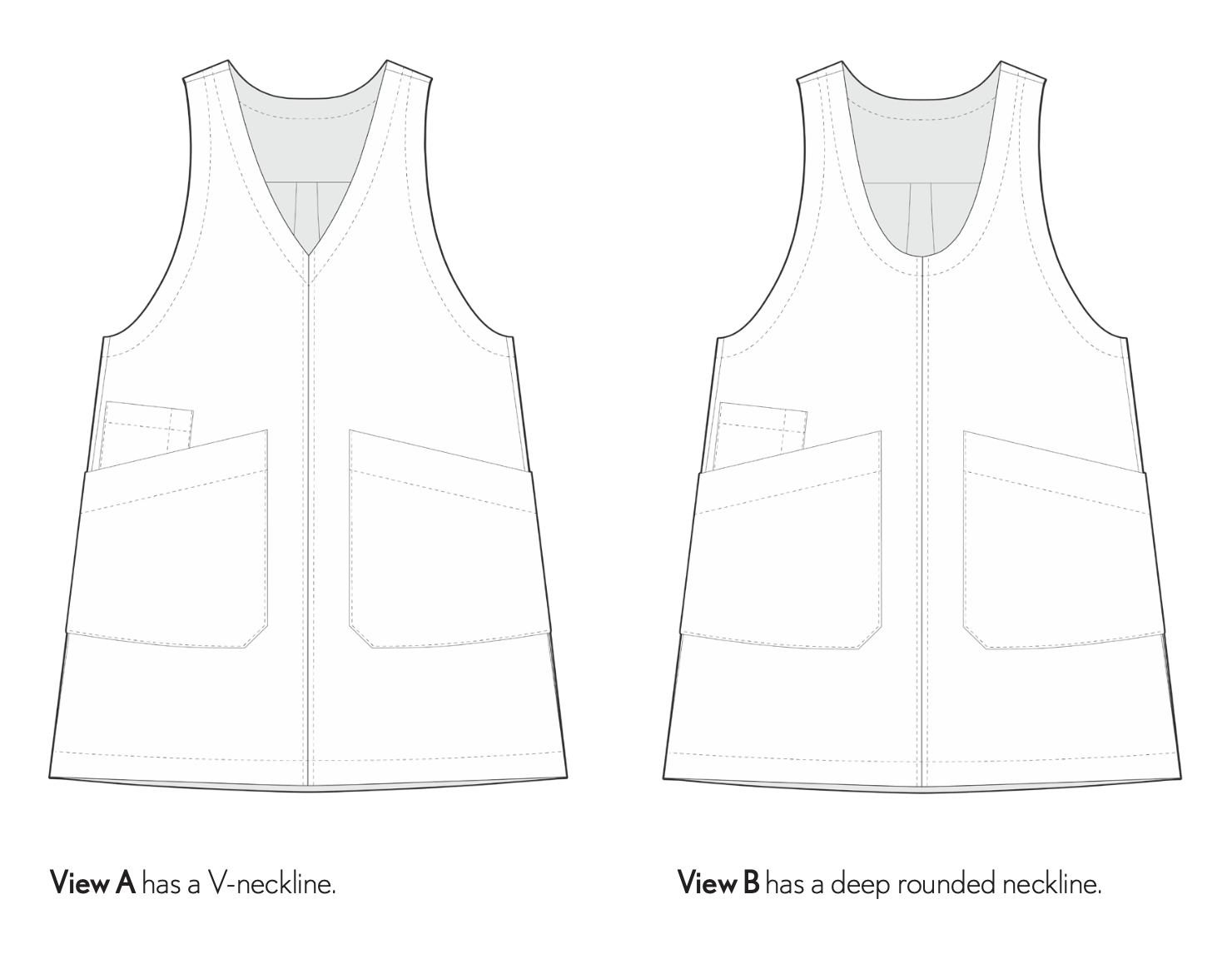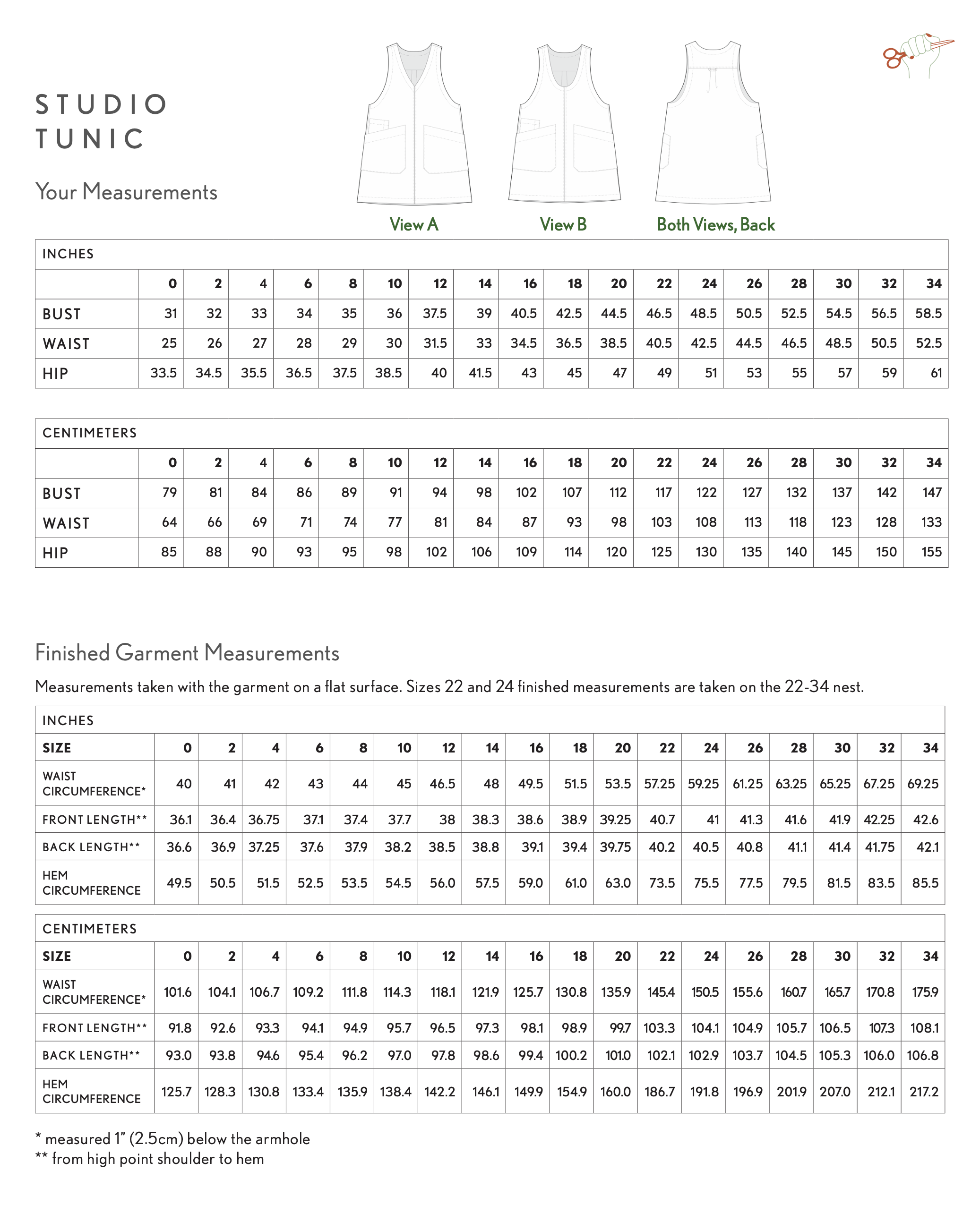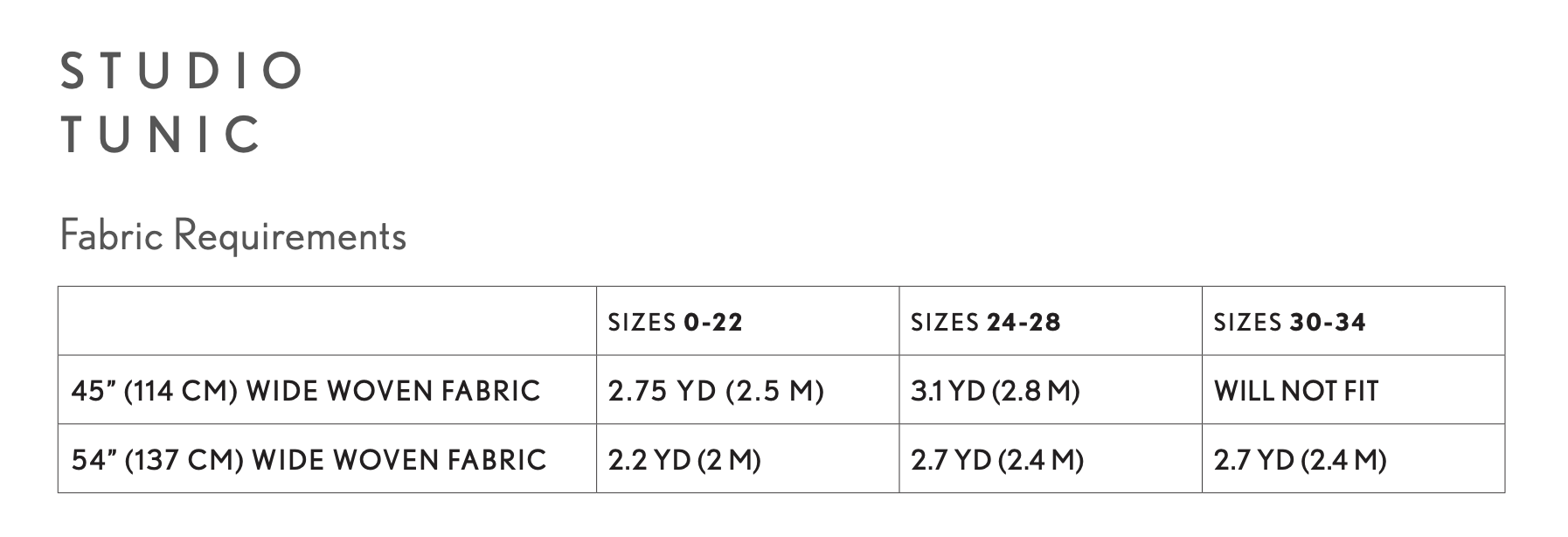Sew Liberated Studio Tunic
We print out the A0 pattern sheets, but you’ll need to download the digital instructions, as we don’t print these. The PDF files will be emailed immediately after purchase, and the printed A0 pattern sheets will be dispatched next working day.
Buy the Studio Tunic sewing pattern from Sew Liberated. The Studio Tunic is a pinafore-style tunic that takes layering to a whole new level.
The utilitarian stitching makes for a durable, wear everywhere answer to your art-teacher-vibes dreams. With roomy pockets for all the treasures and tools that you might need in your day in the kitchen, studio, garden or on the hiking trail, you’ll be hands free and ready for adventure.
The deeper neckline and low armholes make layering over all types of tops, in all seasons, a breeze. It’s easy to layer over jeans, leggings, dresses and skirts with the easy A-line silhouette, and the hem falls to mid-thigh.
Included in the pattern are two neckline options: a V-neck or a deep rounded neckline. The caramel linen sample in the photos was customised by sizing down 2 sizes in the top and grading out to standard size at the hip. The other samples are a standard fit.
This sewing pattern is available to buy in the following formats:
– PAPER (next working day dispatch on orders and FREE UK delivery over £50)
– PDF (available to download immediately after purchase). What is a PDF?
– PDF pattern + Printed A0 copy shop (We print out the A0 pattern sheets, but you’ll need to download the digital instructions, as we don’t print these. The PDF files will be emailed immediately after purchase, and the A0 pattern sheets will be dispatched next working day). What is Copy Shop?
Suggested fabrics: Mid-weight woven fabric. Some wonderful choices are mid-weight linen and chambray, cotton twill, Essex linen or light canvas, in solids or prints. The drape or hand of the fabric will significantly impact the look and fit of the final garment - softer fabrics like washed linen will fall gently for a relaxed, garden vibe, and more sturdy fabrics like light canvas or twill will enhance the oversized, utility look and the A-line silhouette. (If you choose a heavier weight fabric, you might want to use a lighter fabric for your facings to reduce bulk.) More confident sewists might choose a viscose-linen blend for a really luxurious texture.
Fabric requirements:
45″ (114 cm) wide fabric: Sizes 0 - 22, 2.75 yd (2.5 m) // Sizes 24 - 28, 3.1 yd (2.8 m) // Sizes 30 - 34, will not fit.
54″ (137 cm) wide fabric: Sizes 0 - 22, 2.2 yd (2 m) // Sizes 24 - 28, 2.7 yd (2.4 m) // Sizes 30 - 34, 2.7 yd (2.4 m).
Sizing: US 0 – 34 (approx. UK 6/8 – 32/34, based on our standardised size chart). Please also check the designer’s size chart and finished garment measurements.
The pattern is drafted for a height of 5’5″ (165 cm).
Notions: 0.75 yd (0.7 m) of lightweight fusible interfacing, either woven or non-woven (based on 20"/0.5 m wide interfacing).
PDF pattern includes: Step-by-step instructions; US letter/A4 print-at-home pattern (36 pages for 0-24, 45 pages for 22-34); A0 copy shop pattern (2 sheets for 0-24, 3 sheets for 22-34) // Layers: Yes // Projector file: No.
If you’re looking for more maker inspiration, check out the latest sewing pattern reviews from the sewing community. We also have a sewing blog to keep you up to date with all the news from the world of sewing.
If you’re looking for maker inspiration check out our blog. With weekly updates on new patterns, styling ideas and maker inspiration, it's not to be missed.
Cart
Your cart is empty
Spend another £50.00 and get free shipping!
